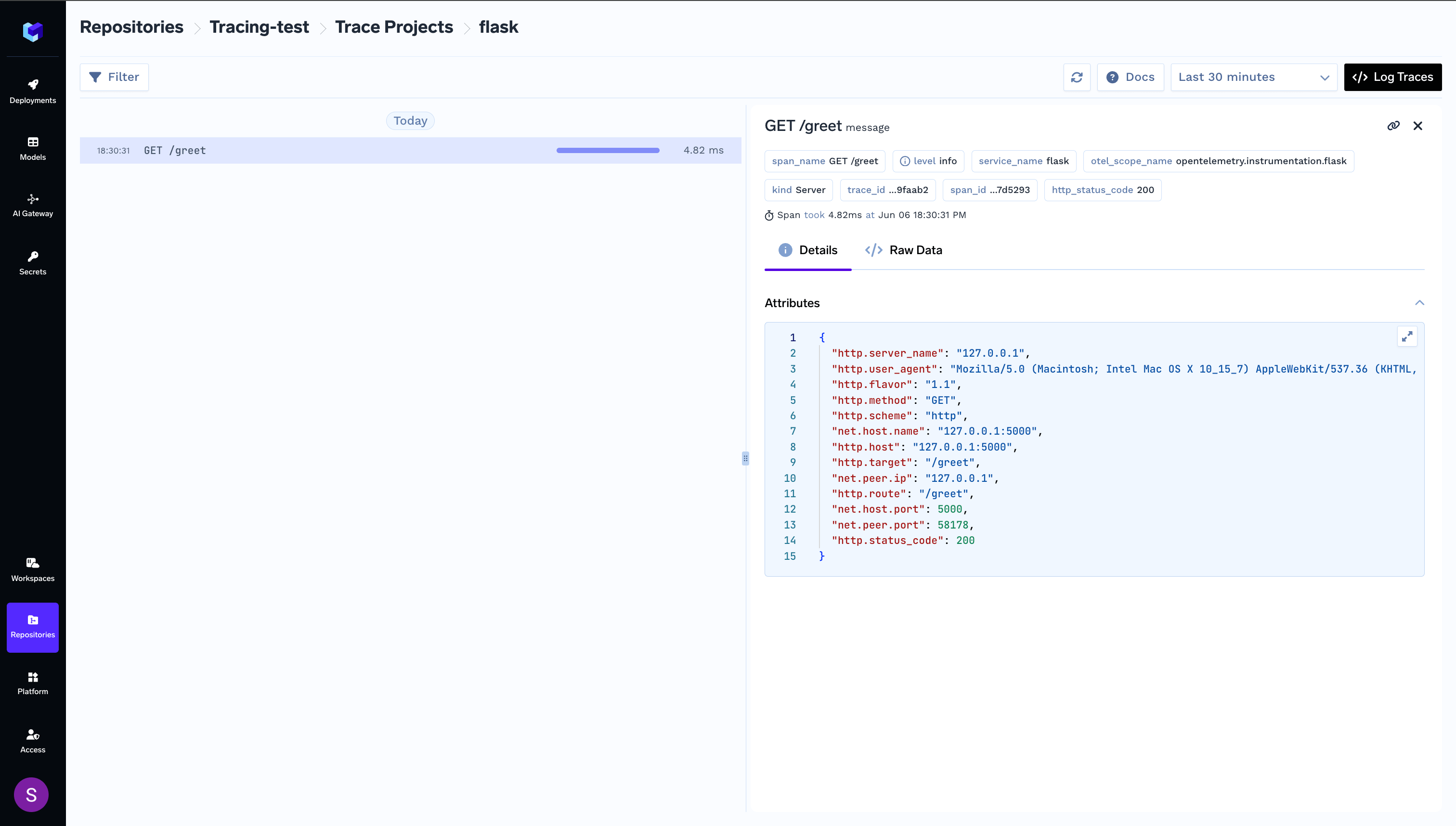/greet endpoint that demonstrates how to integrate TrueFoundry’s tracing capabilities.
1
Create Tracing Project, API Key and copy tracing code
Follow the instructions in Getting Started to create a tracing project, generate API key and copy the
tracing code.
2
Install Dependencies
First, you need to install the following
3
Add Tracing code to Flask application
For FastAPI applications, we need to add the
Traceloop.init() call to the application and instrument the FastAPI app with OpenTelemetry.FastAPI Code
4
Run your application and view logged trace
